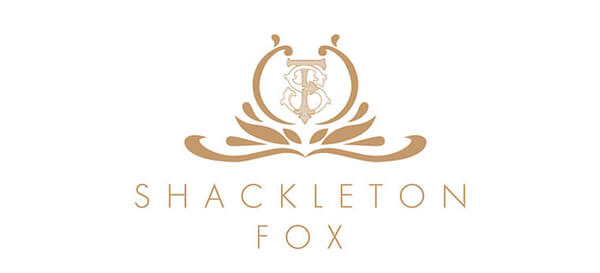Now Trending…with forecasted growth
Understand the history of the candlestick and find your perfect partner that is going last with potential investment and sustainability.
Candlestick, a receptacle for holding a candle. Candlesticks may range in size and complexity from the medieval block of wood holding an iron spike on which the candle is impaled to the huge bronze altar candlesticks of the Italian Renaissance. In the most restricted sense, a candlestick is a utensil for holding one candle, while a candelabrum is a large, standing, branched candlestick for holding several candles. A chandelier is a branched candlestick (or lampstand) suspended from the ceiling.
Forecasted Growth
The Global Candle Holder / Candlestick Market size is projected to grow between 5-10% over the next 8 years. The growth in this industry can be attributed to the increasing demand for decorative items and the growing popularity of home décor products. Reusable candle holders will become more prevalent. The traditional uses of candles, the use of reusable candle holders, and non-electric lighting generally increase in the renewable energy industry.
Candle holders are designed in different styles and colours to suit all types of décor requirements, they’re also used for decorative purposes.
The growing population is very much in line with the increasing demand for candles. In addition, candle holders are helpful in improving your mood and make a room look beautiful at all times. The increasing trend of candleholders among people is one reason why there’s an increased demand for them. Also, another growing trend in this market is that more and more buyers prefer 100% natural candles. This has led to a decrease in demand for paraffin wax candles. These factors will help drive the global candle holder market during the forecast period (2022–2030).
Ancient times
In its earliest form, the candle was a torch made of slips of bark, vine tendrils, or wood dipped in wax or tallow, tied together, and held in the hand by the lower end. Candles of this type frequently figured on Classical painted vases; subsequently, a cup or discus was attached to the base to catch the dripping wax or tallow. The rushlight that was still used in 19th-century Europe was of similar construction.
Middle Ages
The simplest form of the domestic candlestick was a block of wood into the top of which an iron spike was driven vertically. The lower end of the candle was then impaled on this spike and the upper end lighted. Due to its simplicity and utility, this type of candlestick survived into the early 19th century. It is found in various sizes. The earliest form had only a single spike, but subsequently, the stem was wrought into two spikes, or a circular tray was attached to the top, on the upper side of which several spikes might be fixed. Candlesticks of this construction with several tiers of trays or rings for spikes (known as prickets) may be seen in use before shrines in Roman Catholic churches. The socket was introduced as an alternative to the pricket during the Middle Ages, but it did not replace it, and late medieval candlesticks are found with both prickets and sockets on one stem.
Renaissance
The Italian bronze founders produced superbly modeled candlesticks from small table examples to huge altar candlesticks with angel supporters of almost life size. The most magnificent examples were made of rock crystal mounted in precious metal enriched with translucent enamels; among these is the set of altar cross and pair of candlesticks (in the Victoria and Albert Museum) with rock crystal panels mounted in enameled silver gilt, made in the mid-16th century by Valerio Belli. A late 16th-century silver pair in the Vatican was made by the goldsmith Antonio Gentili.
17th Century
The few examples of English candlesticks of pre-Restoration date that have survived offer considerable variety of form. The earliest, which probably dates from about 1600, is of crystal and silver gilt, with two sockets attached to a crystal crossbeam supported on a stem decorated with figures of eagles and satyrs. Fewer candlesticks were imported from the Low Countries in the 17th century, and one of the two main types in use in England at that time was of local origin. It had a trumpet base, hollow stem decorated with “sausage” turning and a wide drip pan set about a third of the way up from base to socket. The other type, which was much produced in the Netherlands, had a baluster stem of excellent proportions and form, spreading base and wide drip pan halfway between top and base.
18th Century
The 18th century was the great age of candlelight, and the salons of the nobility and gentry were lighted by many hundreds of candles from chandeliers, candelabra, and wall sconces. In England silver and glass were used in the homes of the wealthy, while brass chandeliers of domestic manufacture were hung in churches and council chambers. As the century advanced, chandeliers became more massive in form and more elaborate in ornament. The earliest English glass chandeliers date from the 1720s and were of plain design with a heavy ball at the base of the shaft, like the contemporary brass chandeliers. Later they were decorated with numbers of pendants and the surface was given life by cutting. Another decisive change came in the 1770s when the ball was replaced by an urn form. At the same time pear drops were hung from the branches and glass spires set in the upper tiers in place of candles. The chandelier eventually became even more elaborate, icicles being suspended around the shaft and long cascades of pear drops suspended from the lustres.
Table candlesticks were made in great variety of design and material. The great houses contained many dozens of pairs of silver candlesticks, and consequently candlesticks are among the commonest surviving articles of English 18th-century decorative art. The rapid change of fashion in the 18th century from the plain Queen Anne style to the elaborate Late Baroque of early Georgian and subsequently to the Rococo, Neoclassical, and Regency or Empire styles ensured variety in production. A similar evolution of design took place throughout Europe. Because of the greater wealth of the 18th century, the brass candlestick did not play so important a part, but toward the end of the century very elegant designs were executed in Sheffield plate at Matthew Boulton’s works in Birmingham as well as in Sheffield itself.
19th Century
The design of the candlestick in the early 19th century was influenced by the introduction of the tall glass open shade which kept the flame from flickering. The candlesticks were made of brass or bronze and decorated with Egyptian or Classical motifs. An attractive type had a circle of branches below the nozzle from which were suspended cut-glass icicles. In large candelabra, figures of Atlas were prominent, as were expressions of the “Egyptomania” that had gripped the continent.
In the latter part of the century, with the advent of the more convenient and efficient methods of gas and electric lighting, the real need for candlesticks diminished rapidly, although their use continued in spite of the greater efficiency of acetylene, paraffin wax, and other portable lamps. For use when moving about or going to bed, a candlestick was far lighter and simpler to use than these lamps, and the chamber type, with saucer-shaped base and small looped handle, continued to be manufactured in various metals, pottery, or even kitchenware enamel.
20th and 21st Centuries
A revival of purely decorative types of table candlestick or candleholder occurred in the middle decades of the 20th century, stimulated by fashions for candlelit dinner tables. Scandinavian designs popularised candlesticks of glass, both heavy polished glass and lighter blown or molded types. Wrought iron, copper, and brass were used for designs in Italy, Spain, the Balkans, and farther north, in some cases reverting to the spike or pricket method of fixing candles in position. Silver, pewter, and wood also were employed.
Altar candlesticks continued to be used in churches, and, although traditional “church plate” types persisted widely, many individual designs were commissioned in the modern style. Silver, gilt, and, to a lesser extent, brass still remained popular materials into the 21st century, but aluminum, stainless steel, enamel inlays, and some forms of plastic have all been used successfully in both old and new churches. In general, these designs are simple, based on pure or adapted geometric shapes that exploit the quality of the material.



